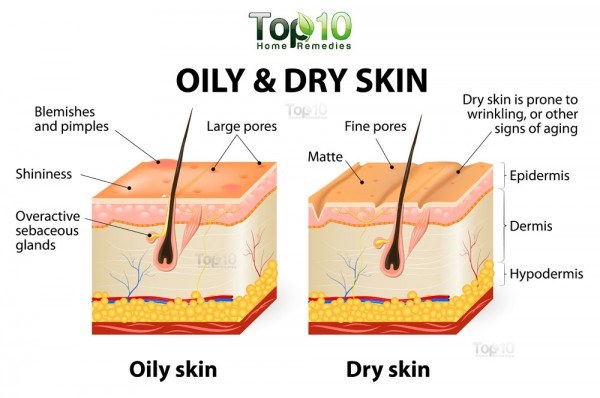When the excess oil accumulating on the skin combines with pollutants, like dirt, the pores of the skin may get sealed and this often leads to the presence of skin irritations like whiteheads, blackheads, or even worse, painful pimples.
Genetics can be considered the primary cause of oily skin in some people, and dry or normal skin in others. But hormonal changes in the body due to puberty, pregnancy, birth control pills, or menopause can also trigger oily skin. Lifestyle choices, like diet or too much stress, can also be a cause of overactive sebaceous glands. Although this is quite a common problem that has simple remedies, many people turn to expensive, chemical-based skin care products that leave their skin inflamed and peeling. If you are plagued by oily skin and pimples, try out these 3 simple, but effective steps that are scientifically proven to help you get rid of your oily skin.
1. Choose a Cleanser that Works for You
To avoid blackheads and acne, it is vital that you keep your skin clean, especially if you have oily skin. But don’t think that just any cleanser will do the trick. [1] Cleansers have specific ingredients that take care of different skin concerns. Choosing the wrong types of cleansers can actually be detrimental to your skin care. Look out for the following signs and choose your cleanser with care:
Look For The Right Specialty Ingredients
Even though it doesn’t have to dry out the skin or make it squeaky clean, your cleanser should not leave you with an oily feeling after the washing. Cleansers specifically intended for oily skin should remove the built up oil and, preferably, give an additional boost in fighting acne. Such cleansers are usually formulated with specialty ingredients like bentonite clay, which has oil-absorbing properties, alpine willowherb, and/or benzoyl peroxide, which can reduce oil production and fight bacteria.
Consider Ingredient Strength
Before choosing a cleanser, you need to consider just how oily your skin is. If your skin feels extremely dry or stretched after cleansing, then you need to use a cleanser with less harsh oil-removing ingredients. To remove excess oil from your skin, you need to strike a balance in how strong the ingredients need to be.
Additional Benefits
The right facial cleanser makes your skin feel clean and bright and ready for the application of the next skin care step, whether it be a sunscreen or a night-time moisturizer. It is helpful if your cleanser has additional ingredients that benefit your skin. Cream-based cleansers with lavender or soothing chamomile can help retain the moisture on your facial skin while helping to cleanse the excess oil. Citric acid is another great addition in cleansers, as it is a natural skin brightener.
2. Hydrate Your Skin
According to Deniz Ataman, a Clarins skincare specialist and the managing editor for Perfumer and Flavorist Magazine, “Dehydration can stress glands to produce more oil.” She suggests using a clay mask on a regular basis to help hydrate the skin.[2] Leyda Elizabeth Bowes, MD, head of Bowes Dermatology in Miami, warns that using moisturizers with ceramides can lock in bacteria and lead to pimples. She recommends using moisturizers with hyaluronic acid instead, to keep the skin hydrated. This helps to prevent stressing out and overstimulating the sebaceous glands
3. Avoid Foods with Inflammatory Fats
Saturated fats and trans fat are considered inflammatory fats that can cause oily skin to become inflamed and acne-ridden. A report published in “Lipids in Health and Disease” reveals that Omega-3s have anti-inflammatory properties and acne is rare in populations that consume plenty of this good fat. [3] Fried foods, high-fat dairy, and fatty meats, like bacon and steaks, are high in saturated fat and are best avoided by those suffering from acne breakouts.[4] Commercially-made cookies, cakes, pies, and other processed foods that list hydrogenated vegetable oil as an ingredient, are high in trans fats that can inflame and irritate oily skin. Try to include more healthy fat alternatives in your diet, especially ones rich in omega-3s, such as flaxseeds, walnuts, and oily fishes, like salmon and mackerel.
Conclusion
Keep your oily skin clean using the right type of cleansers that contain the required specialty ingredients in the right strength. Ensure you hydrate your skin, using a good moisturizer with hyaluronic acid, rather than one with ceramides, which might actually inflame an oily skin. A healthy diet that includes plenty of omega-3 sources, like oily fishes and flax seeds, and avoids inflammatory fats will surely help clear up all that troublesome acne and give you the glowing smooth skin of your dreams.
